Animal Print history and trend 2025-2026. Article by Guillaumette Duplaix, Editor of RUNWAY MAGAZINE. Photo Courtesy: GettyImages. Creative concept: Runway Magazine.
History of the Animal Print
We are witnessing the powerful return of animal print — and that’s a good thing!
After those so-called “creators” from major fashion houses who once presented garments made with the actual skins of rare animals, we now prefer the proliferation of animal-print fabrics.
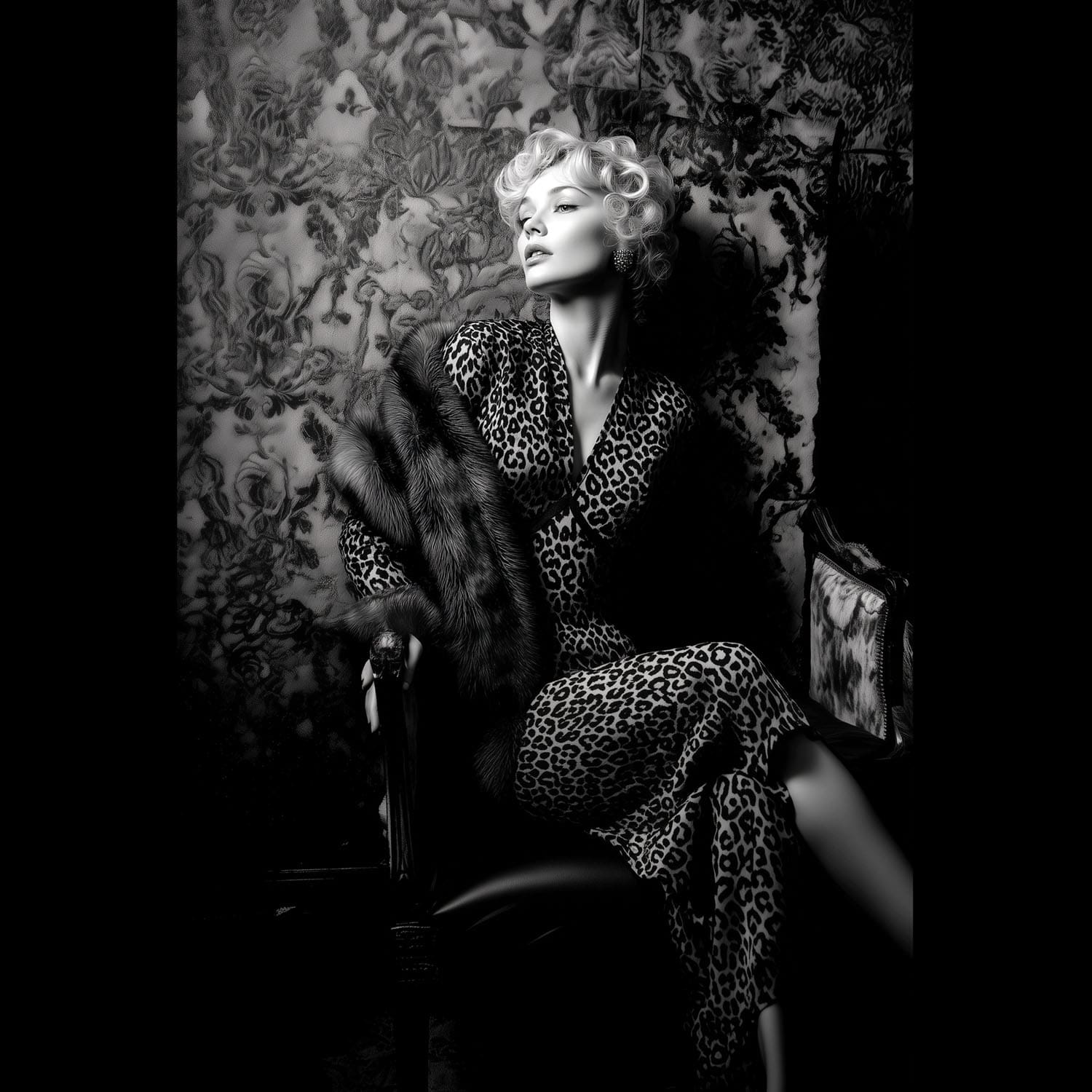
Throughout history, creators across all domains (fashion, design, interior decoration) have adorned their textiles with animal motifs, executed in the most diverse styles.
Origins of the Animal Print
If you go back to ancient Egypt, you can hardly avoid encountering falcons, cats, and snakes painted on walls. Why? Animals were metaphors for divinity, strength, and the mysteries of life and death.
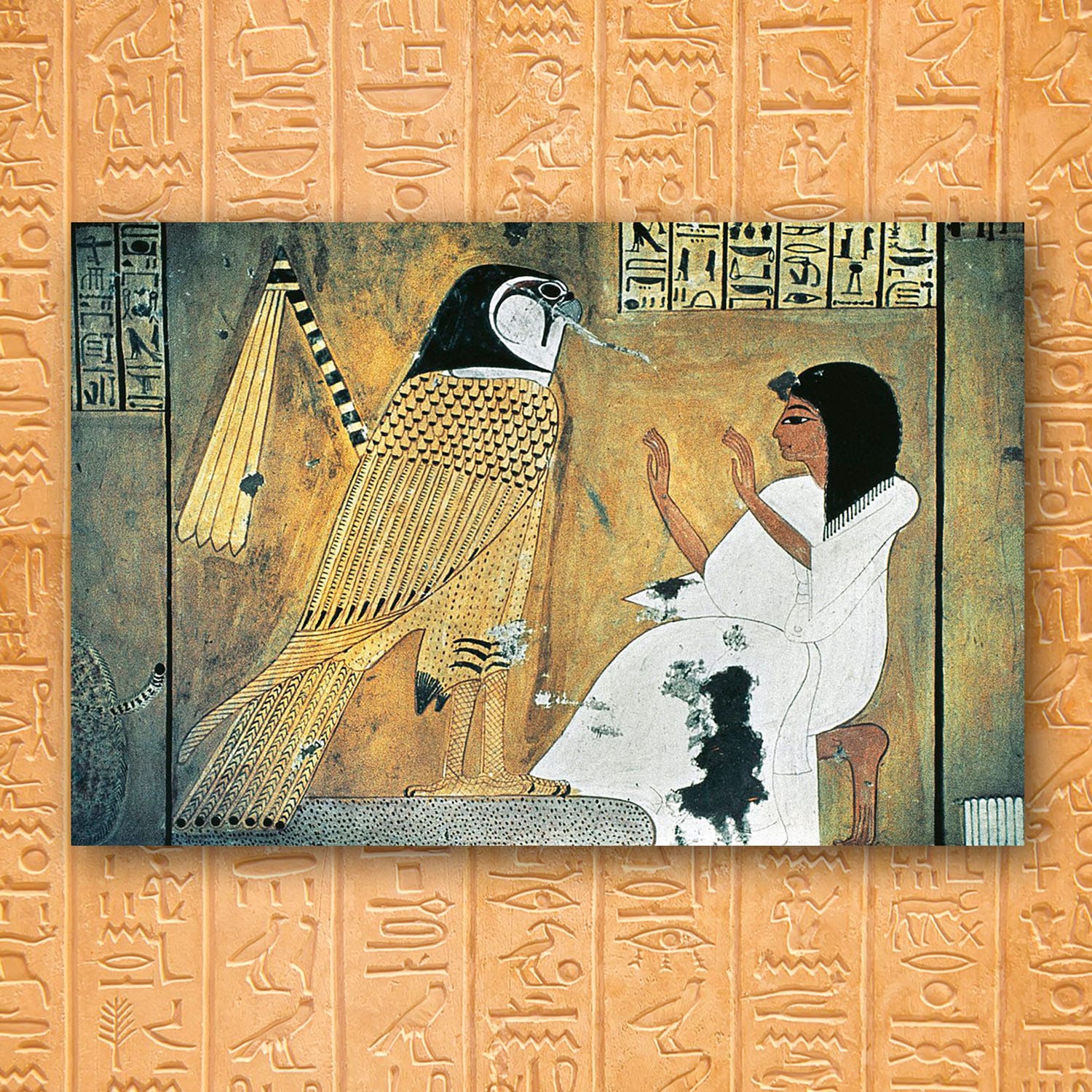
Women created leopard motifs by stenciling designs onto textiles such as linen, since real animal skins were considered rare and precious. This process symbolized a form of wealth and power. In Africa, chiefs wore genuine animal skins to display their status and absorb the symbolic strength of the creature. In the Zulu kingdom, for instance, the leopard skin was reserved for kings and spiritual leaders (South African National Museum of Cultural History).
This connection between power and animal print extended into Europe, where Napoleon’s troops decorated their helmets and military gear with leopard skins, reinforcing the image of audacity and bravery associated with these motifs (Musée de l’Armée, Paris).
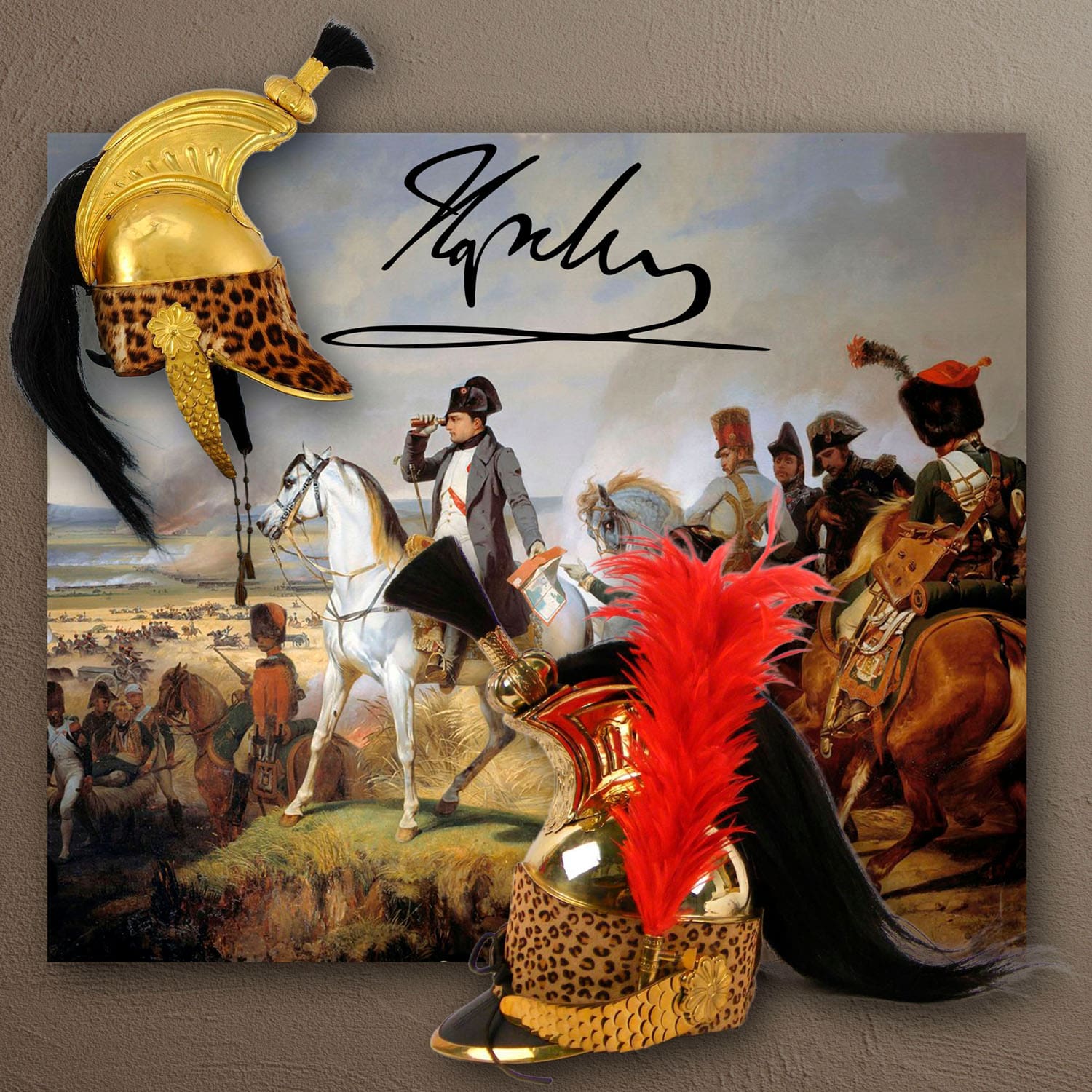
History of Animal Prints in Fashion
Origins of Animal Print in the Middle Ages
The Middle Ages were all about knights, castles… and textiles! Because yes, even then, fashion left no one indifferent. Wearing a lion on your garments was a bold declaration of nobility and courage.
If you displayed a lion, an eagle, or even a griffin on your clothing, it was the medieval equivalent of wearing a luxury logo.
Animal motifs were widely used in tapestries, heraldry, and textiles (BNF – Medieval Manuscripts).
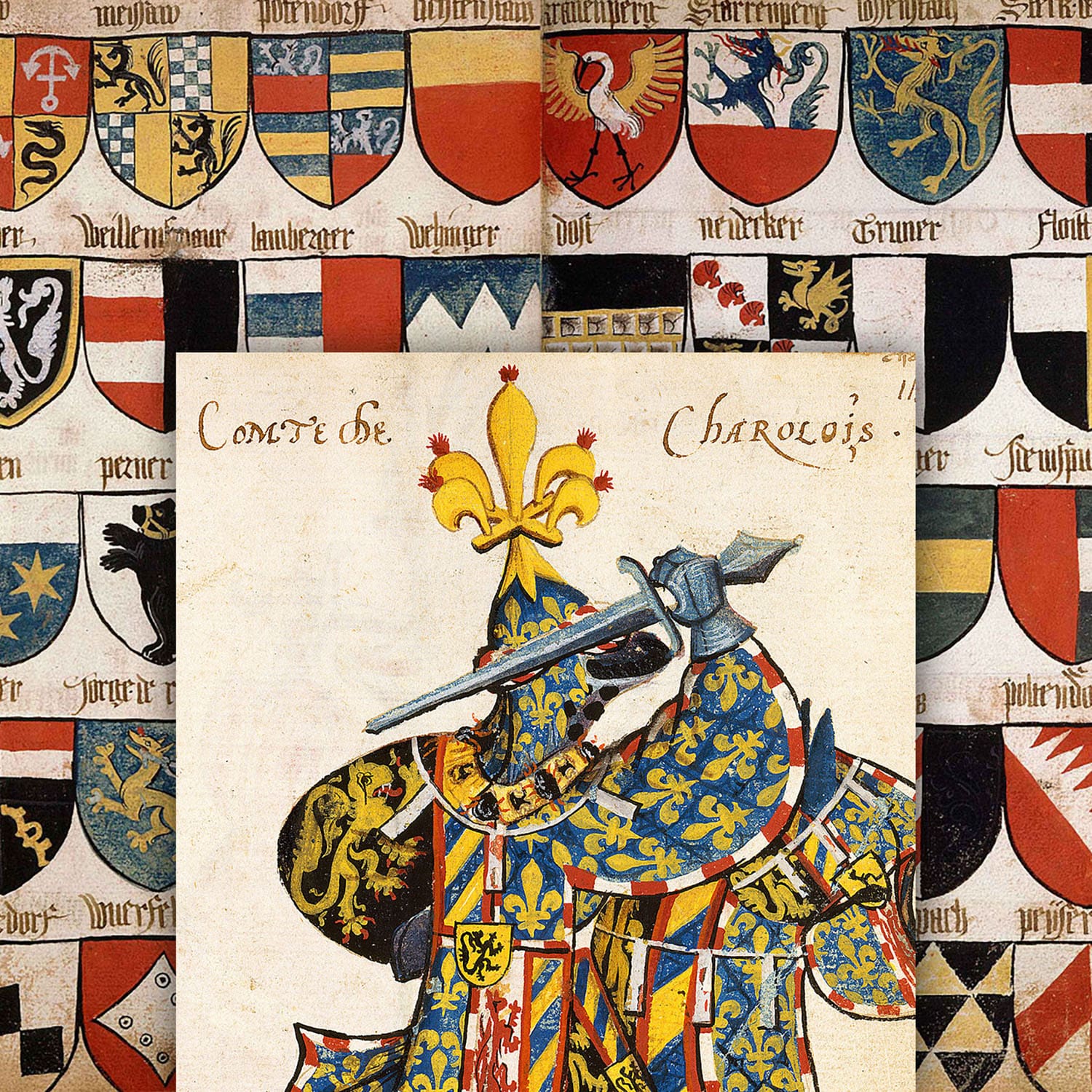
From the Renaissance to the Modern Era
During the Renaissance, focus shifted slightly. Animals were still present, but they now symbolized the virtues and vices of mankind. Think of the unicorn, often depicted in tapestries, most famously in The Lady and the Unicorn, preserved at the Musée de Cluny in Paris.
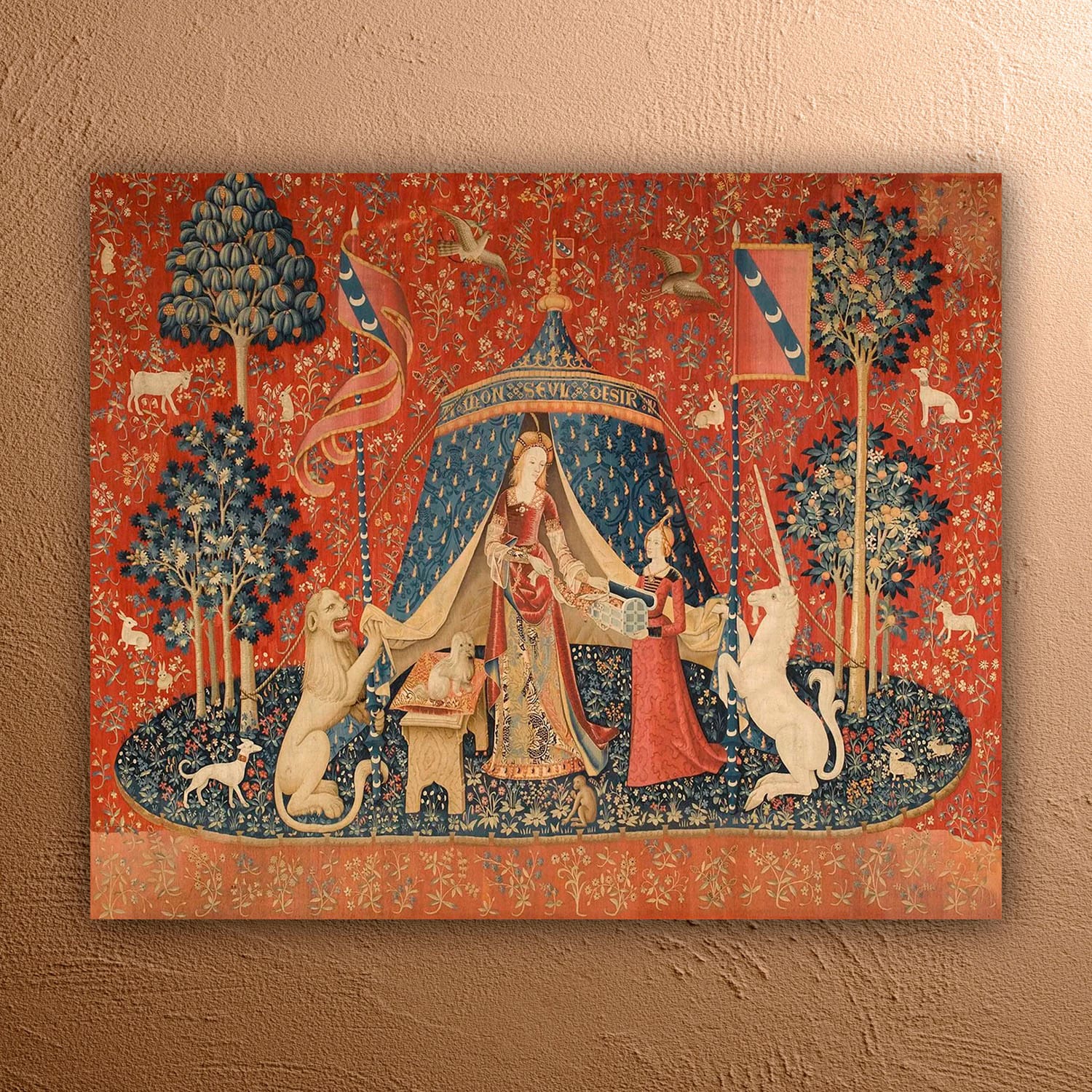
From their modest beginnings to their current status, animal motifs have come a long way in the world of fashion. Very early on, animal print was a symbol of social status, worn by kings and queens as a sign of power and wealth. Over time, these motifs became more accessible and began to appear in everyday clothing.
Their popularity skyrocketed in the 1960s, when designers began using them in bold and innovative ways. Since then, they have become a staple of fashion, appearing on everything from evening gowns to accessories. The evolution of animal prints has indeed followed the rhythm of cultural and societal change, reflecting both our shifting aesthetics and our evolving relationship with the animal world. The 1960s and 70s marked the peak of animal print as a symbol of provocation.
In the 1970s, David Bowie confirmed this idea by stepping into a pair of tight leopard-print trousers.
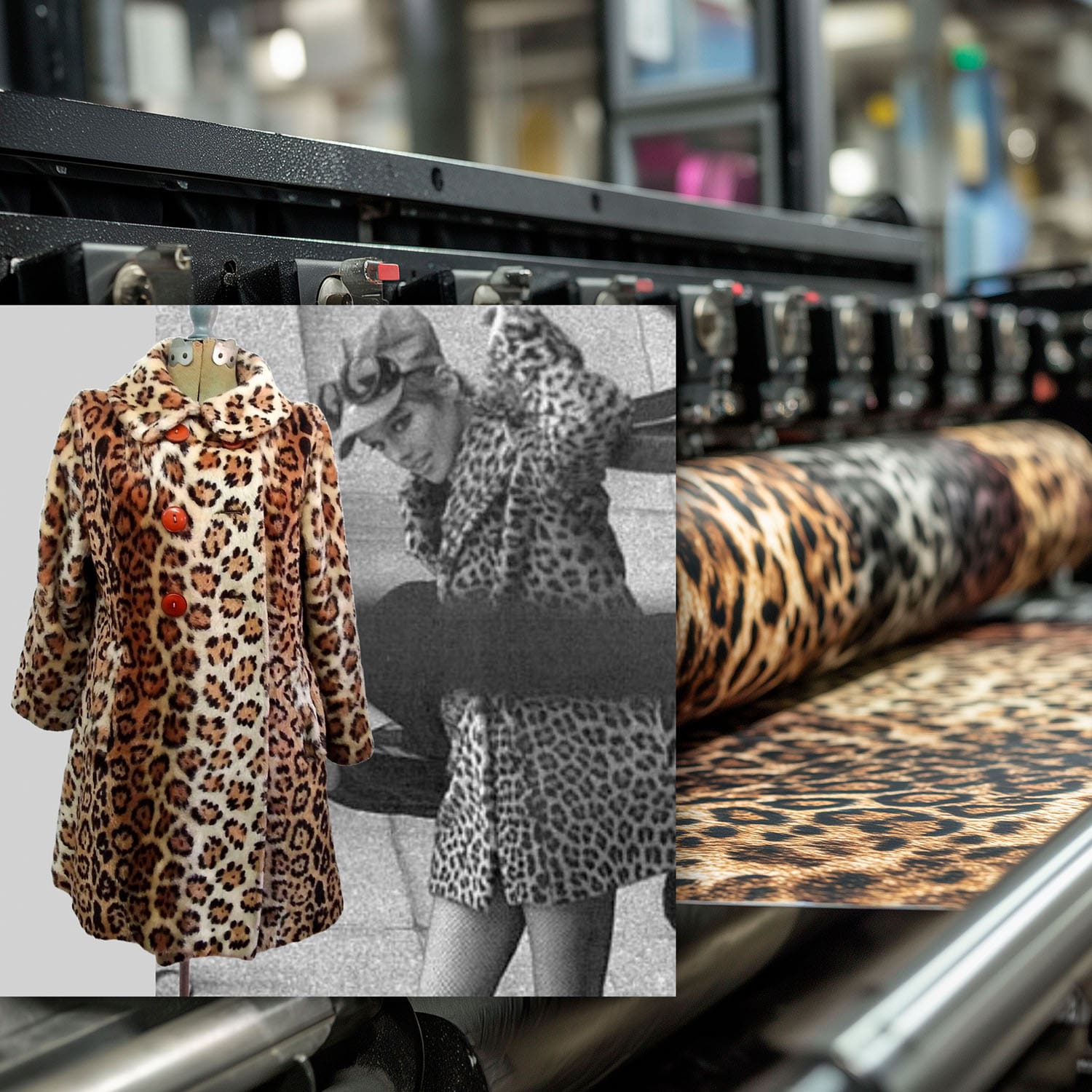
This was the era when Yves Saint Laurent dared to introduce feline prints into his collections, giving them an aura that was both sensual and aristocratic. At the same time, social movements — sexual liberation, the rise of feminism, political protest — transformed animal print into a visual manifesto: wearing leopard or zebra became an act of defiance, a way to break free from bourgeois conventions.
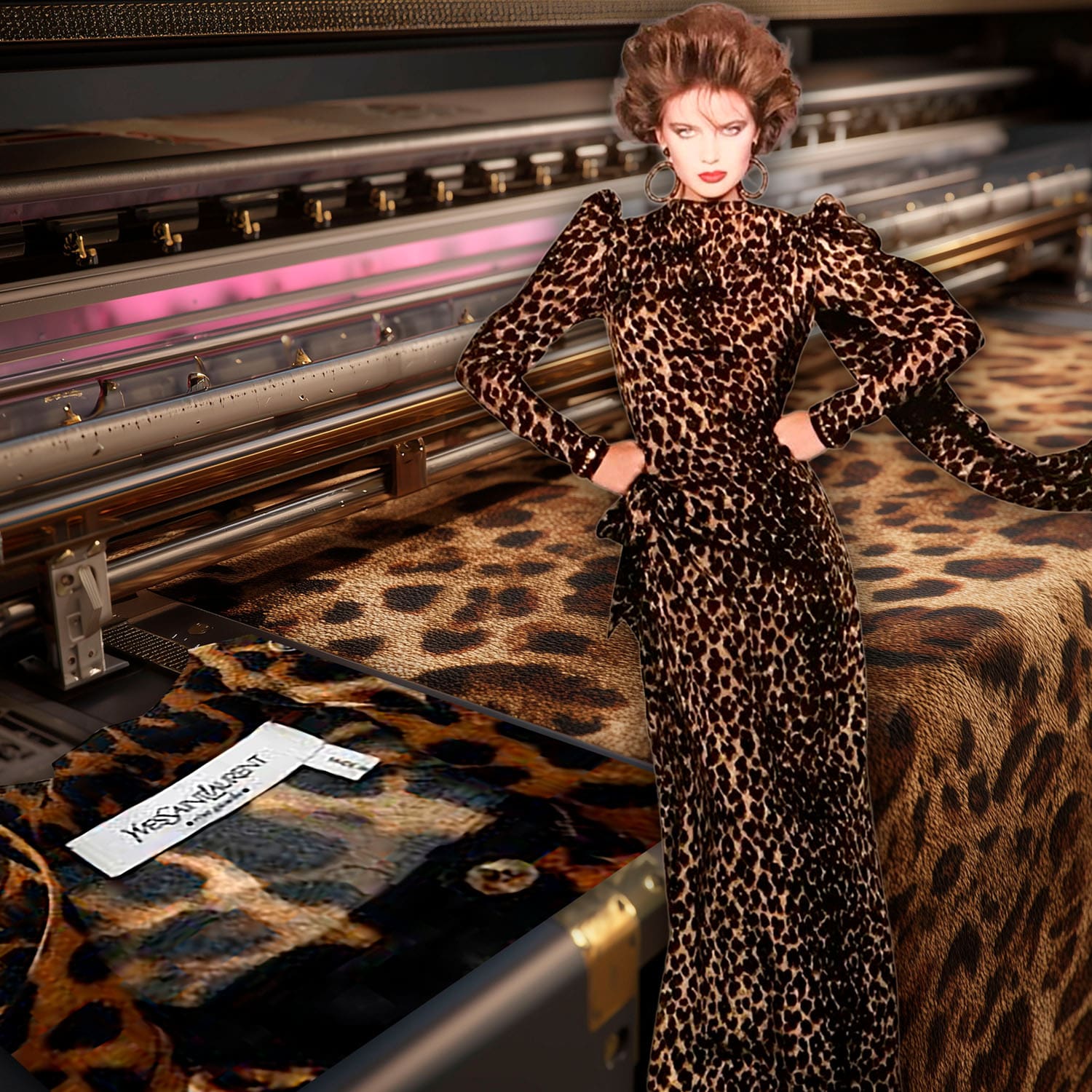
In the United States, pop culture and Hollywood cinema contributed to its diffusion, from the feline elegance of Eartha Kitt to the provocative silhouettes of exploitation films. This dual movement, between couture and counterculture, definitively sealed the status of animal print as an untamable fashion icon.
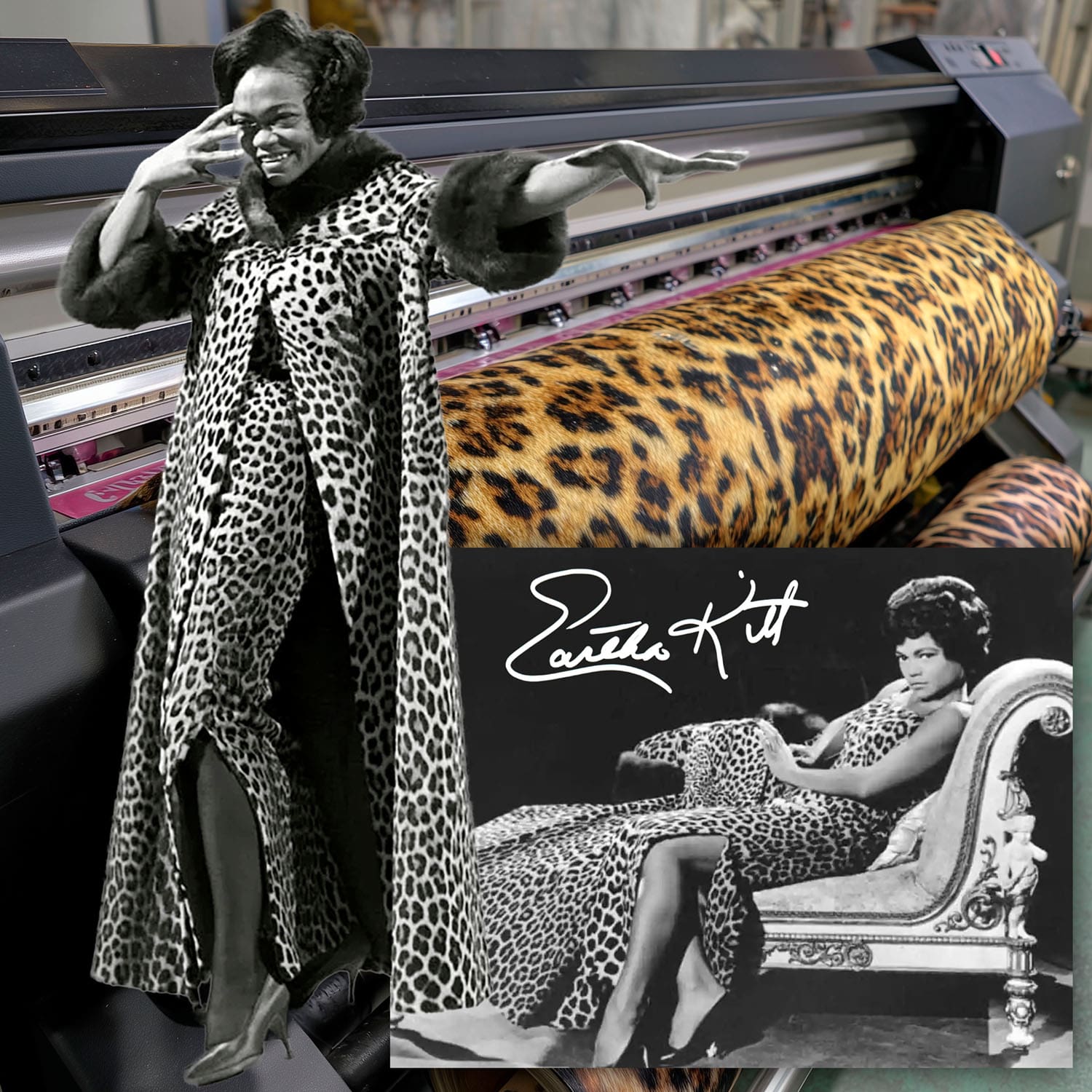
It was enough to make people love it, but not enough to fully restore its image. An image in which the print ultimately found comfort: a little less vulgar, yet still rebellious.
In the 1980s, it was Madonna’s turn to leave a mark on the motif. More than 40 years later — and in FAUX fur, please! — it still carried just as much power… As if, in the end, it was the animal that triumphed over the human. Whether within hippie or punk movements, this print asserted itself as the emblem of rebellion.
In that same momentum, the runways caught fire: Jean-Paul Gaultier, then nicknamed fashion’s “enfant terrible,” twisted animal print into a provocative armor, while Thierry Mugler sculpted it onto exuberant silhouettes with an almost bestial presence.
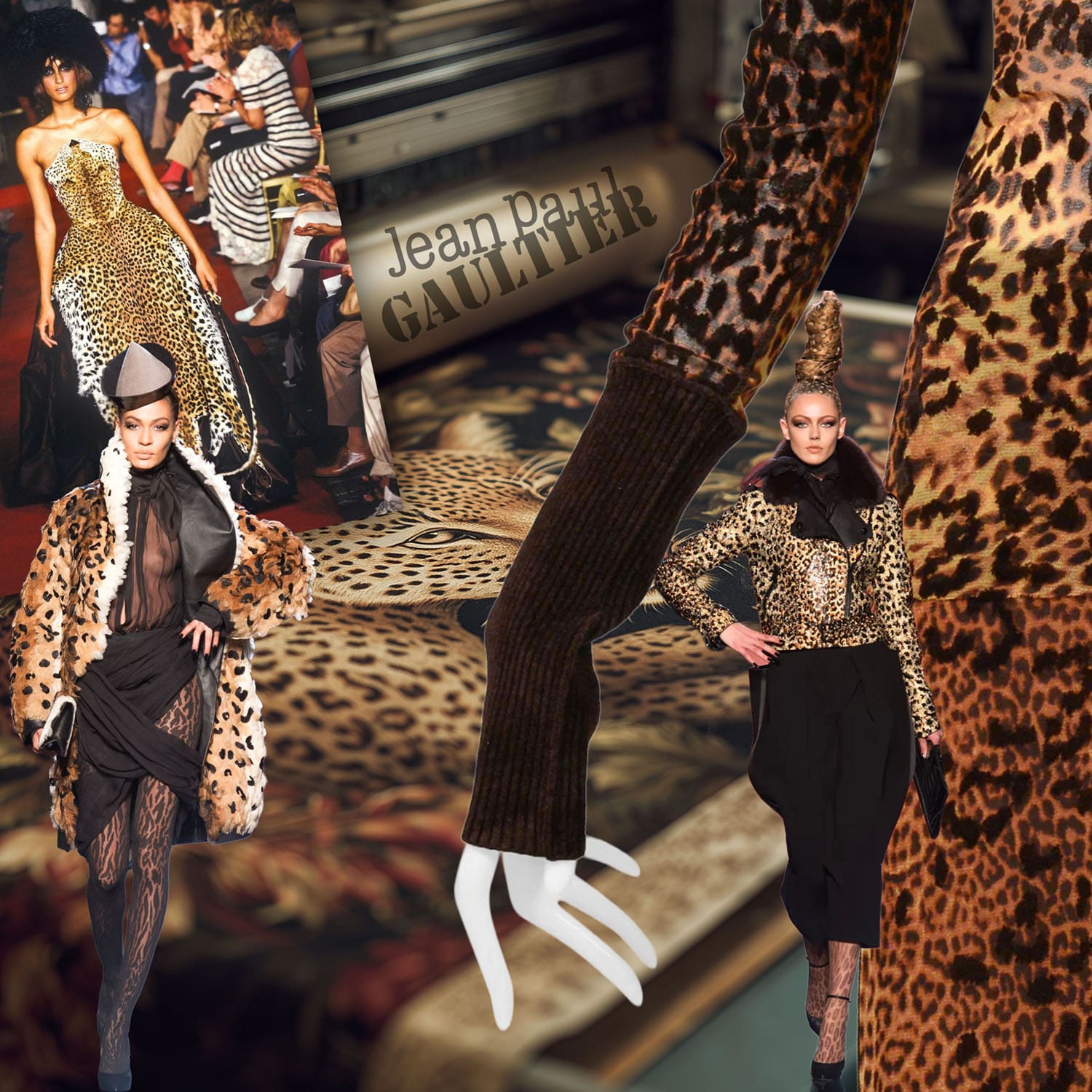
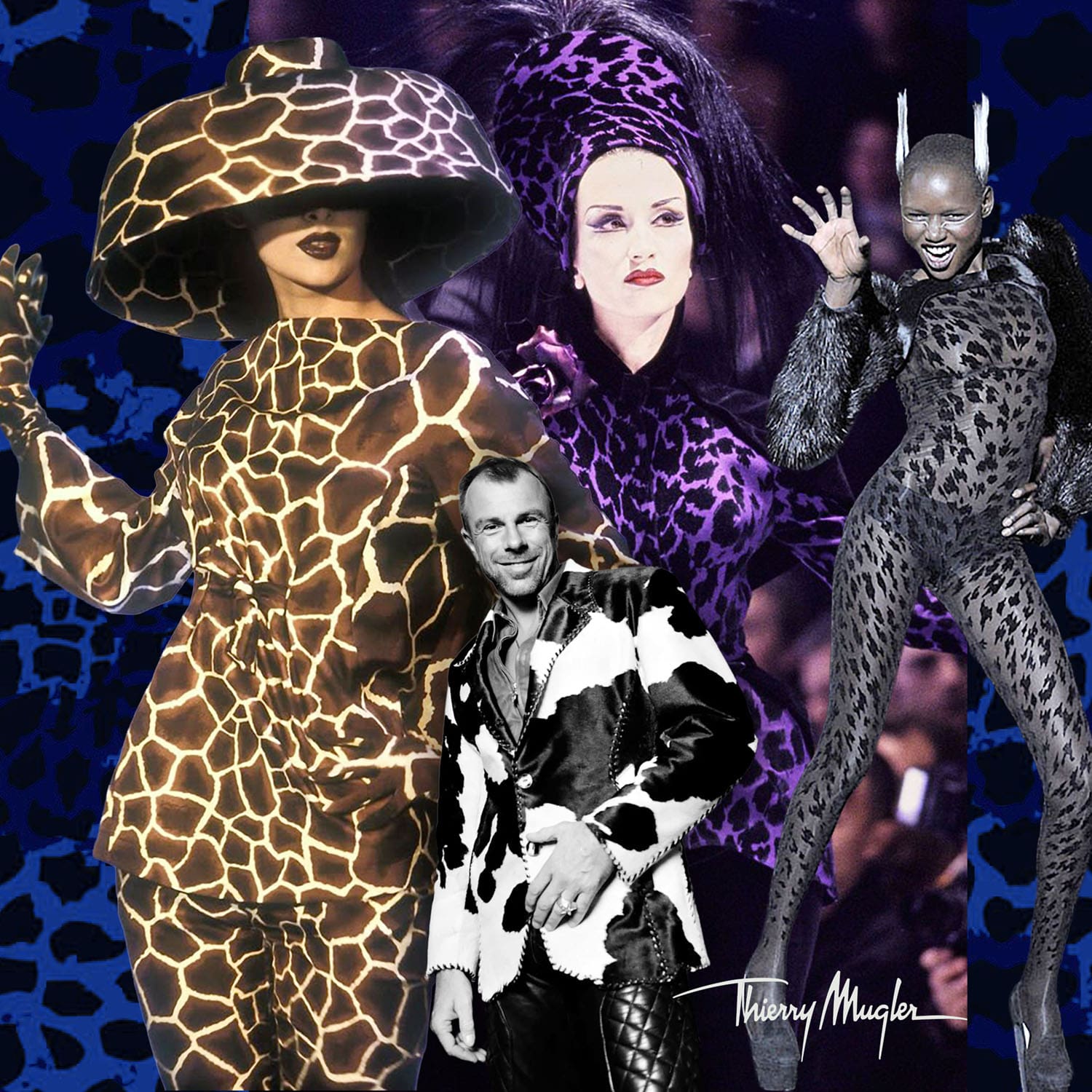
The leopard print became both armor and provocation, oscillating between seduction and threat.
On television and in music videos, from Tina Turner to Debbie Harry, it established itself as a symbol of feminine affirmation and stage power. Far from being just a motif, it transformed into a true visual language, carrying a wild energy that extended far beyond the sphere of fashion. In the 1980s, Thierry Mugler reinterpreted it, helping to anchor animal print in the visual vocabulary of glamorous and provocative fashion (Palais Galliera).
In the 1990s, animal print underwent a new mutation: it left the strictly couture runways to invade both pop culture and the streets. The Spice Girls, with Mel B — Scary Spice — turned leopard print into a global emblem, transforming it into the uniform of girl power. At the same time, designers such as Gianni Versace and Roberto Cavalli introduced it into a flamboyant luxury universe, saturated with glamour and excess.
This dual appropriation — between mass culture and haute couture — allowed animal print to democratize while preserving its aura of provocation.
It was no longer just a pattern: it had become a visual language, an identity statement.
Leopard Print
The earliest representations of people wearing leopard skins date back to 2500 BC in Egypt. At the Louvre, a stele depicts Princess Nefertiabet wearing a leopard-patterned tunic (Musée du Louvre).
In the 18th century, textile manufacturers in Lyon began producing fabrics that imitated exotic skins, responding to Europe’s fascination with the Orient and Africa (Musée des Tissus de Lyon).
This Parisian fascination with exotic motifs was part of the broader context of Orientalism and the taste for exoticism that dominated the end of the century. Animal-print fabrics became not only fashion objects but also social provocations: wearing a leopard petticoat meant appropriating a wild, sensual, and dangerous imaginary.This game of seduction and transgression spread through libertine salons, where the print became a sign of audacity, a subtle way of shaking the moral codes of the time.
Paris — capital of the Enlightenment but also of textile daring — was thus laying the first stones of the leopard’s sultry history in fashion.
In the 20th century, one famous woman did much to popularize leopard print: Jacqueline Kennedy. In 1962, her personal couturier Oleg Cassini designed a coat made of real leopard skin for her, in which she was photographed. The result: leopard coats sold like hotcakes. It is estimated that this trend cost the lives of 250,000 leopards (Smithsonian Magazine).
A Cult Print
The impact of animal prints on fashion is undeniable. They have brought a touch of audacity, glamour, and exoticism to numerous fashion collections, and continue to inspire designers today.
They also played a key role in the development of major fashion trends, from the iconic leopard dress of the late 1960s to the Jungle trend of the late 1990s.
At the turn of the millennium, they resurfaced in unexpected contexts: Alexander McQueen, for instance, reinterpreted the motif within dark, theatrical narratives, while Dolce & Gabbana made it their sensual signature, deeply rooted in Mediterranean imagery.
Animal print was no longer merely decorative; it became a tool of visual storytelling, a vehicle for emotions and attitudes.
Despite changes in fashion and society, animal motifs remained an enduring trend, proving they are far more than a fleeting fad. They are an integral part of fashion history, a reflection of our ongoing fascination with the natural world, and a bold style statement that never goes out of fashion.Their persistence on both the runways and the streets attests to an undeniable truth: fashion has never stopped drawing inspiration from the animal — the mirror of our deepest instincts and unspoken desires.
Christian Dior is often credited with democratizing leopard print in modern fashion. In 1947, his famous creations Jungle and Afrique made a lasting impression and turned this motif into a true cult symbol (Christian Dior Archives).
In his Little Dictionary of Fashion, Dior warned: “But to wear leopard, you must possess a kind of slightly sophisticated femininity. If you are gentle and sweet, don’t wear it…”
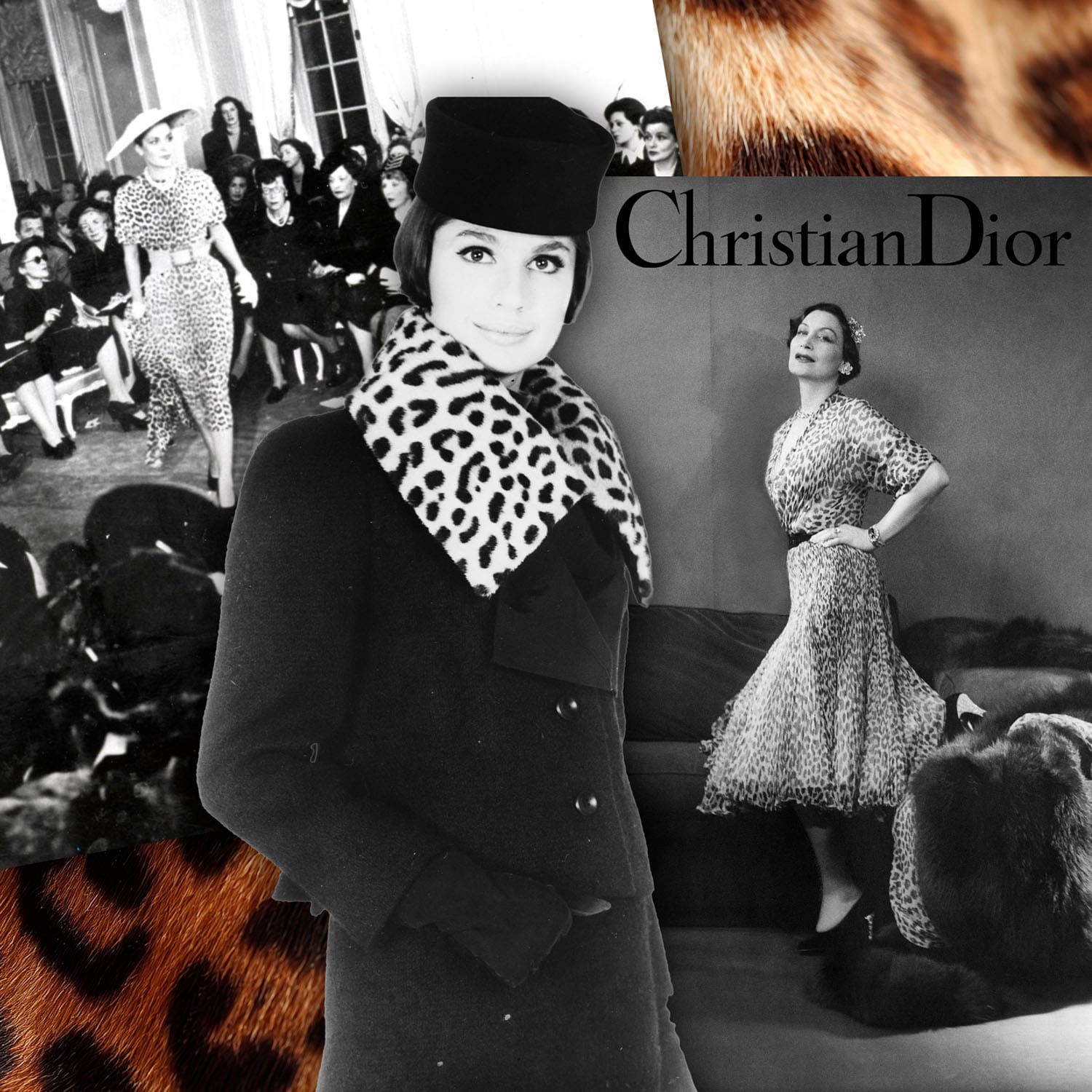
A symbol of power and synonymous with unapologetic sensuality, it was adopted by the fashion icons of the era such as Elizabeth Taylor, Marilyn Monroe, Josephine Baker, and Brigitte Bardot, to name only a few.
A story of power, of culture… and of idols, too.
They were the ones who managed to reverse the trend. A single appearance wearing it, and suddenly the entire world rushed to embrace leopard fur. Josephine Baker, Elizabeth Taylor, and even Jackie Kennedy — by the 1960s, all had adopted it and proudly worn it. Just a few photographs in the newspapers, and it was popularized.
This appropriation by Hollywood stars and the Parisian stage shifted the print from a sultry register to the status of a collective fantasy.
Leopard print became both glamorous adornment and controlled provocation. On stage, Josephine Baker turned it into an emblem of freedom and exoticism, transforming each appearance into a manifesto. In films, Elizabeth Taylor and Marilyn Monroe embodied an indomitable, carnal, and unapologetic femininity, linking the print to the sensual icon par excellence. As for Brigitte Bardot, she inscribed it forever into the DNA of French seduction. Through these figures, the motif ceased to be marginal: it became a universal aspiration.
The Impact of Animal Prints on Haute Couture
Fashion, by its very nature, is an ever-evolving industry. Yet one element remains constant: the impact of animal prints on haute couture.
These motifs have been used by designers in their collections to create unique and daring pieces. Animal print is a trend that has transcended both time and seasons, always bringing a touch of sophistication and audacity to any outfit.
Whether it be the sculptural silhouettes of Thierry Mugler, the flamboyant gowns of Roberto Cavalli, or the baroque creations of Gianni Versace, each reinterpreted animal print in their own way, infusing it with a distinct identity. With Cavalli, it became almost a personal manifesto — an exuberant, sensual second skin. For Mugler, it was closer to an armor, magnifying feminine power. Versace, on the other hand, turned it into an ostentatious signature, blending excess, saturated colors, and feline motifs.
This plasticity no doubt explains the longevity of animal print: it has adapted to every era and every aesthetic movement, from punk provocation to bourgeois elegance, from haute couture to the runways of fast fashion. It remains one of the rare motifs capable of embodying both luxury and subversion simultaneously.
Ultimately, it is clear that animal prints remain a cornerstone of haute couture, bringing a unique and audacious touch to every collection.
Season after season, animal prints reappear, reinvented by designers to adapt to contemporary sensibilities. At Dolce & Gabbana, leopard print has become a house code, reaffirmed as a symbol of Italian seduction. Valentino plays with more graphic, almost abstract variations, where the animal motif transforms into texture or visual rhythm. Even maisons renowned for their minimalism, such as Céline or Givenchy, have not resisted introducing it occasionally — proof of its versatility and narrative strength.
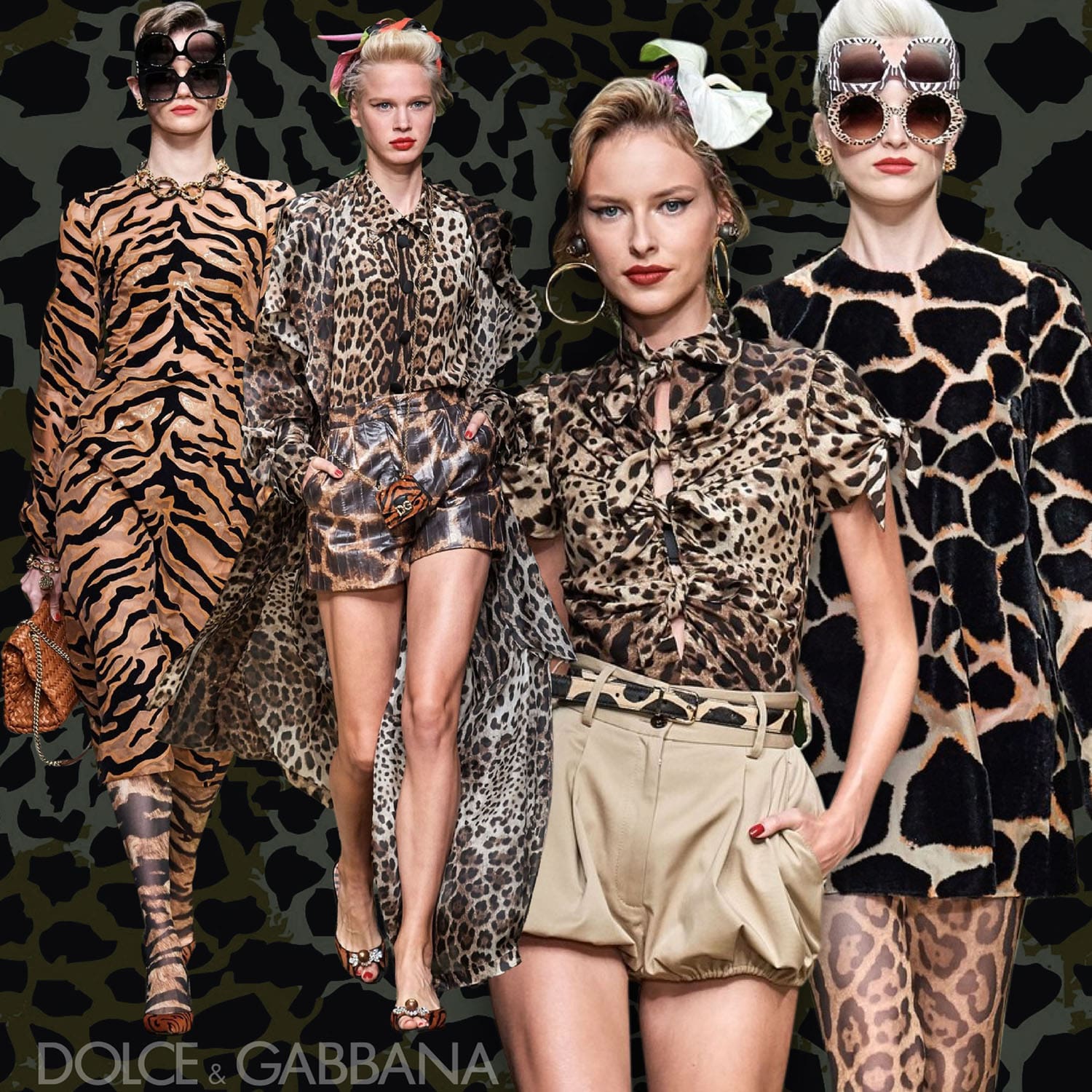
For animal print is never neutral: it always tells us something about the era that adopts it. At times a provocation, at times a statement of luxury, it embodies a piece of the collective imagination that continues to inspire haute couture ateliers.
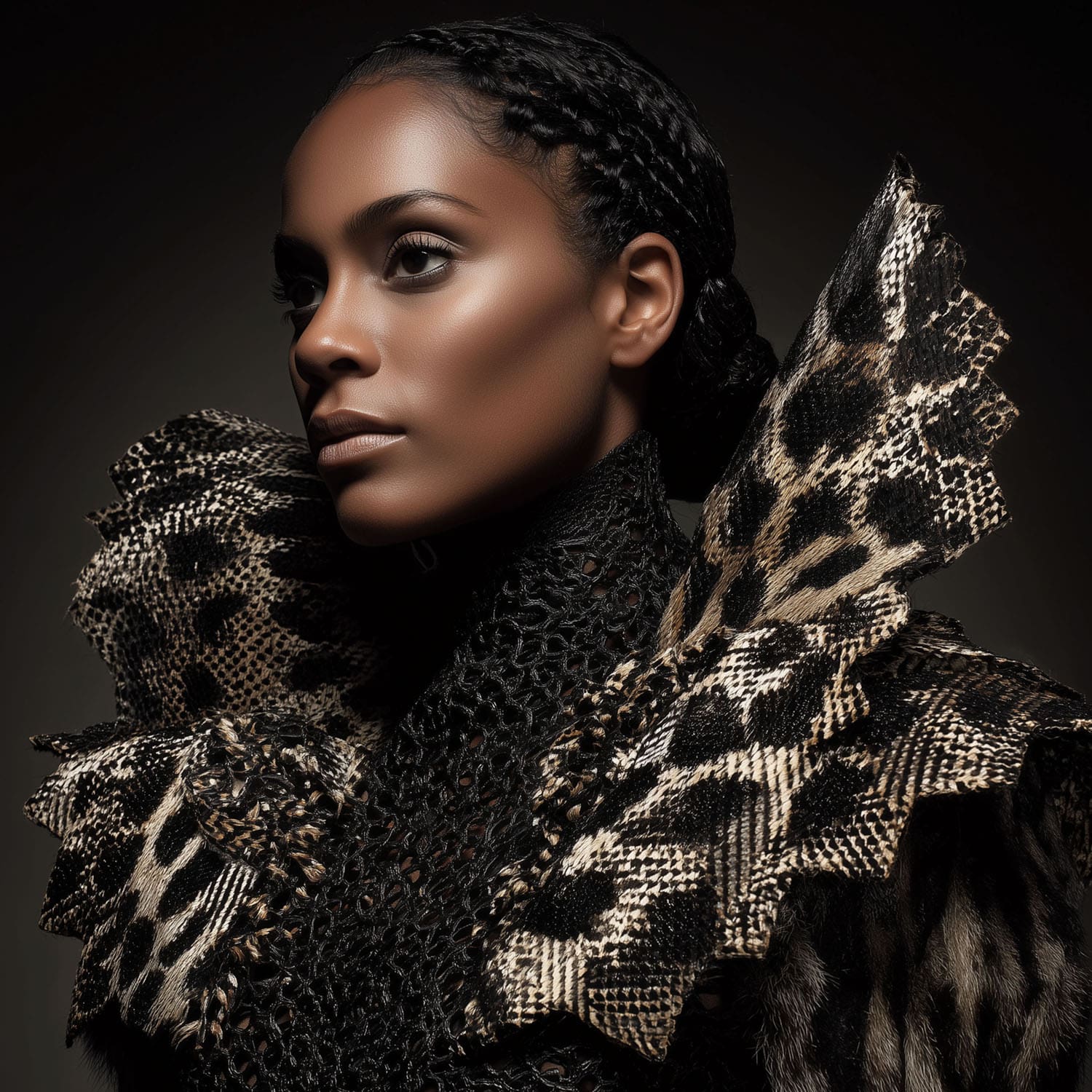
Coco Chanel embraced leopard print, considering it the embodiment of glamour and luxury — a sentiment she expressed with the famous words: “Fashion passes, style remains.” She used it to evoke a sense of luxury, rebellion, and emancipation, appropriating the animal’s nocturnal and mysterious qualities to create emblematic designs such as leopard-print coats.
Her integration of this flamboyant motif consolidated its place in fashion history, transforming it into a timeless symbol of confidence and independence. Chanel regarded leopard print as the incarnation of glamorous and mysterious qualities, linking it to the very “nocturnal” nature of the leopard itself.
Her influence allowed leopard print to remain a versatile and enduring motif, capable of transcending trend cycles and maintaining its relevance.
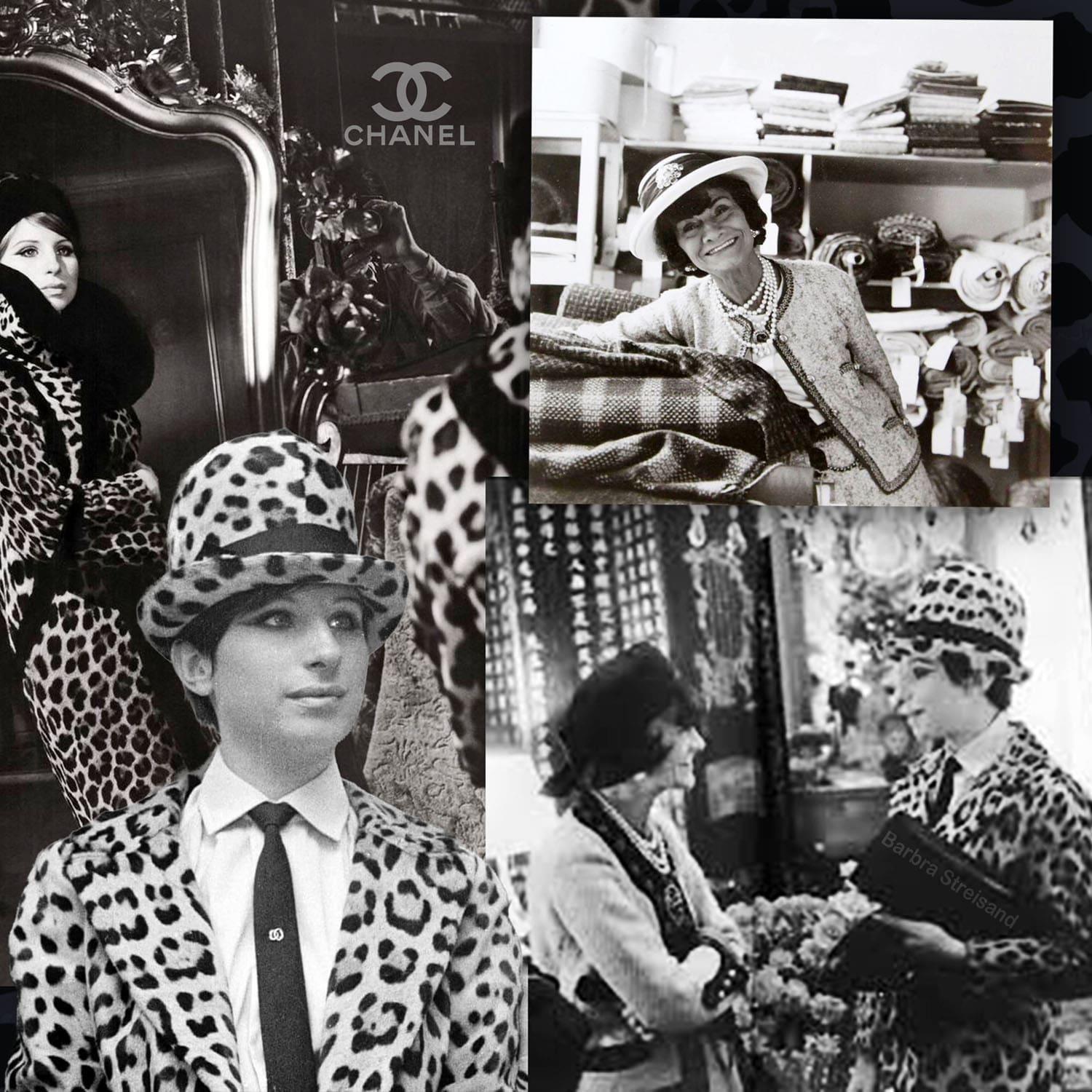
Throughout the ages, animal print has constantly reinvented itself, always remaining an undeniable fashion staple. It is intriguing to wonder what its evolution will be in the years to come.
New interpretations of animal print may emerge, with innovative designers pushing the limits of imagination. It is also conceivable that greater emphasis will be placed on more ethical and environmentally conscious animal motifs, reflecting a global awareness of biodiversity preservation.
Animal print remains a timeless trend. Forever renewed and forever appreciated, it continues to fascinate the fashion world, proving its relevance and endless appeal.
This year, designers have not only played with cuts and styles, but also experimented with new color variations. Leopard print can now be found in pastel tones, metallic finishes, and even vibrant shades, offering a bold and contemporary interpretation of this timeless motif.
This chromatic evolution opens up new possibilities for integrating leopard print into more creative looks. A multiplication of palettes created by today’s designers demonstrates that the print is no longer confined to its original wild register: it has become a true field of graphic experimentation, a playground for designers who reinvent it season after season.
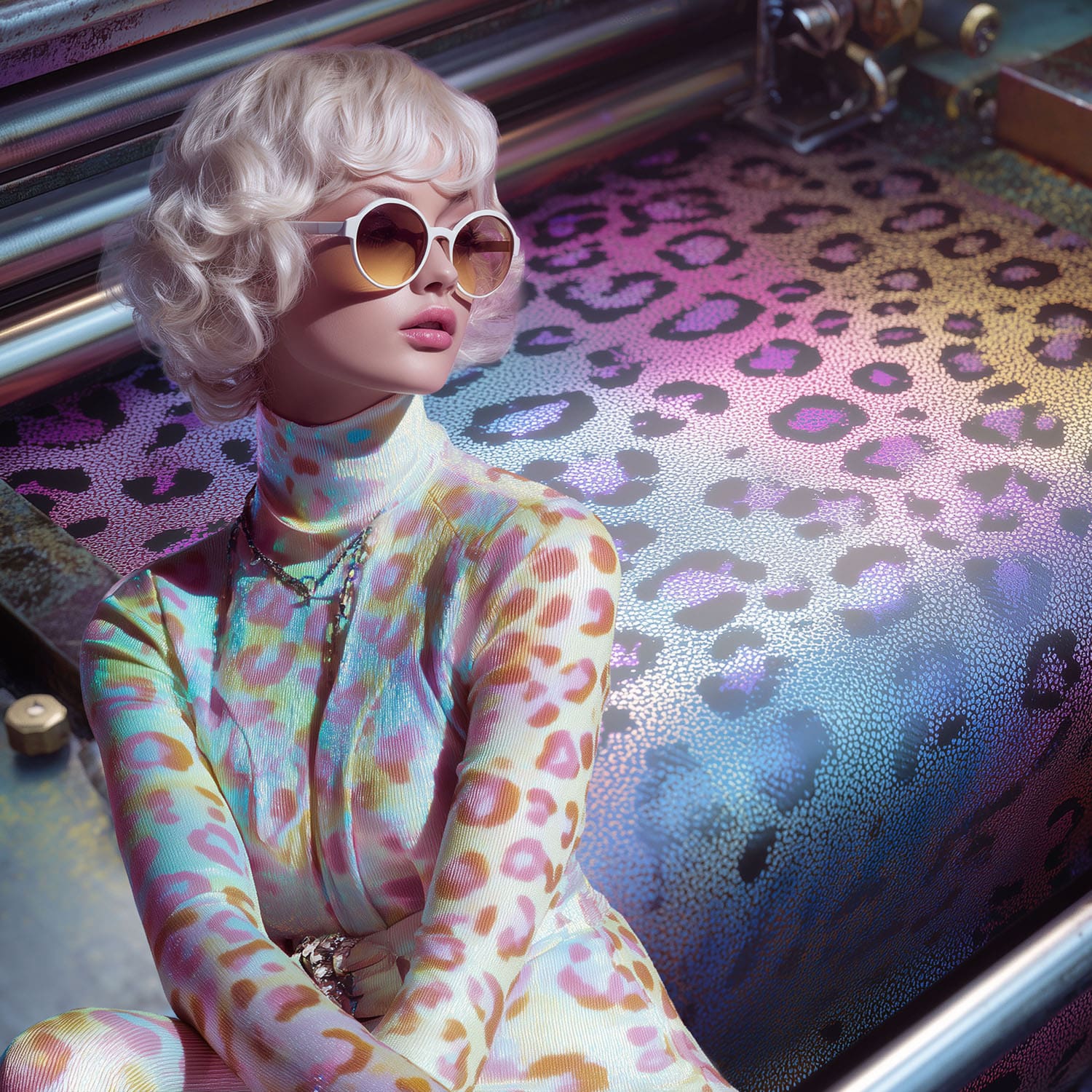
By shifting from pastel to neon, leopard print now asserts itself as a chameleon, capable of seducing every generation and every style.
Conclusion
The shift from animal fur to animal print is a trend bound to intensify, as consumers grow increasingly aware of the impact of our consumption habits on the environment. As a result, these alternatives are excellent options for celebrating the beauty of animal skins without the negative consequences of decimating species.
At the same time, the development of sustainable textiles and digital printing is paving the way for animal motifs that respect biodiversity (Ellen MacArthur Foundation). Innovations in recycled fibers, plant-based leathers, and even AI-generated prints now make it possible to achieve the same visual intensity without compromising ethics. Some fashion houses are even exploring the use of organic pigments or 3D printing techniques to create unique, customizable patterns with a low carbon footprint.
Thus, animal print — far from belonging solely to the past or to a wild imaginary — is fully projecting itself into the future. It becomes the symbol of a fashion capable of reconciling desire with responsibility, sensuality with sustainability. A striking proof that humanity’s fascination with the animal, so deeply rooted in our culture, can today be expressed without predation, but with creativity and respect.
Bibliographie & Sources
• Victoria & Albert Museum – Chinese Textiles: Symbols of Power and Status.
• South African National Museum of Cultural History – Zulu Royal Regalia and Animal Skins.
• Musée de l’Armée (Paris) – Collections du Premier Empire.
• Bibliothèque nationale de France (BNF) – Manuscrits médiévaux, armoiries et textiles.
• Musée de Cluny – La Dame à la Licorne.
• Fondation Pierre Bergé – Yves Saint Laurent – Archives des collections haute couture.
• Musée des Tissus de Lyon – L’impression textile au XVIIIe siècle.
• Smithsonian Magazine – Fashion and Endangered Species, 2013.
• Christian Dior Archives – Petit Dictionnaire de la Mode (1954).
• Palais Galliera, Musée de la Mode de la Ville de Paris – Expositions sur Thierry Mugler
